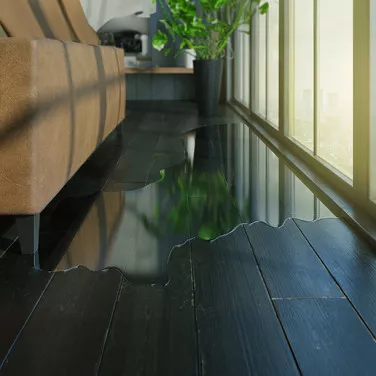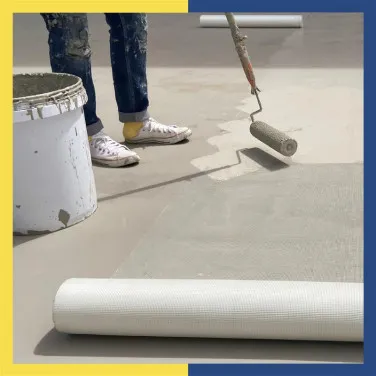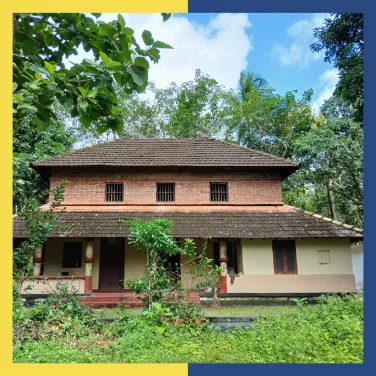

Water Tank Waterproofing Solutions & Maintenance Guide
A guide to water tank waterproofing: Essential things to know
Discover the critical aspects of water tank waterproofing and why it's essential for protecting your home. Learn about common damages, factors to consider, tips for effective waterproofing, and how Dr. Fixit can assist you.
Table of Contents
- Does water tank waterproofing safeguard your structure?
- Common damages faced due to inadequate water tank waterproofing
- Factors to consider before starting the waterproofing process
- Tips for successful water tank waterproofing
- Common waterproofing materials for water tanks
- How can Dr. Fixit help in keeping your water tank secure
- FAQs
When homeowners consider or take up waterproofing, certain aspects often go unnoticed until they become pressing issues. One of these aspects is neglecting your water tank. Water tank waterproofing might not be the first thing that comes to mind when considering home maintenance, but it's a critical aspect that should not be overlooked.
Many people waterproof areas like walls, roofs, kitchens, and bathrooms, assuming that these are the only areas at risk of water-related damage. But waterproofing your water tank is equally important because both overhead and underground water tanks store a bulk of water, are susceptible to water damage, and pose risks of contamination. Let's understand this in detail.
Does water tank waterproofing safeguard your structure?
Yes! and here's how.
Water tanks are constantly exposed to water, making them highly susceptible to water-related damage if not properly waterproofed. Without adequate protection, water can seep through cracks and porous materials and affect the adjoining walls and surfaces. If left unattended, this issue can escalate and affect the structure of your home.
Underground tanks
Without waterproofing, water from underground tanks can not only seep out and affect the foundation but also travel upwards to the walls of the house and damage the interiors. It can lead to staining, health concerns due to mould, issues in the structure's stability, etc. Apart from that, the chances of groundwater seeping into the tank and contaminating the quality of water are also high.
Overhead water tanks
Waterproofing your overhead water tank inadequately can result in seepage into walls. This can lead to water leakage from roofs, damaged ceilings, costly repairs, etc. Moisture infiltration can also facilitate mould growth, compromising the integrity of the house and posing health hazards to the residents.
Common damages faced due to inadequate water tank waterproofing
Skipping water tank waterproofing can have adverse effects on your house -
-
Water contamination
Inadequate water tank waterproofing can lead to contamination of stored water, making it unsafe for consumption and household use.
-
Damage to adjoining walls
Water leakage and seepage from poorly waterproofed tanks can seep into adjoining walls, causing peeling and blistering of the surface, cracks, dampness, etc.
-
Rising water dampness
Rising dampness occurs when moisture from leaking tanks moves upward through walls or floors, leading to damp patches, discolouration, deterioration of building materials, etc.
-
Stains
Water stains may appear on walls, floors, or ceilings as a result of leakage or seepage from water tanks, affecting the aesthetic appeal of your home.
-
Leaks
Leaks in water tanks can result in water escaping from the tank and pooling in surrounding areas, leading to water-related damage, structural issues, and potential hazards such as slip-and-fall accidents.
-
Mould and mildew
Water tank leakage or seepage can provide an ideal, moist environment for mould and mildew growth which can compromise indoor air quality and pose health risks to occupants.
Factors to consider before starting the waterproofing process
Before waterproofing the water tank, ensure that you have considered important factors like -
-
The type of tank
Underground water tank waterproofing requires different chemicals and methods as compared to overhead water tank waterproofing. Ensure that you are choosing the right solutions and methods according to the type of tank.
-
Type of materials used
Knowing what type of materials are used to build your tank can help you determine the type of waterproofing solution better.
-
Extent of leakage
Assess the severity of any existing leaks in water tanks to determine the appropriate repair method. Apply the right overhead/underground water tank leakage solutions to prevent future damage.
-
Waterproofing solutions
Research and identify the best waterproofing chemicals or methods for water tank applications. Consider factors such as quality, durability, compatibility with tank materials, tolerance to weather elements, etc. Apart from waterproofing the surface, you might also have to fill grouts, repair cracks, and more, which would need separate solutions.
-
Professional assistance
Whether you are waterproofing your water tank during construction, during renovation, or just repairing it, ensure you get professional assistance. A contractor certified by reputable companies like Dr. Fixit will ensure reliable advice, specific knowledge, specialised solutions, experience, and more. This will ensure that the waterproofing is effective and offers long-term protection.
Tips for successful water tank waterproofing
It is always recommended to seek the advice of waterproofing specialists instead of doing a DIY project. Ensure your contractor has considered the following -
-
Cleaning and preparing the tank surface thoroughly before applying any water tank waterproofing solutions
-
Addressing cracks and gaps in the tank structure before waterproofing
-
Choosing high-quality waterproofing materials suitable for the tank type and material
-
Ensuring that the manufacturer's instructions are followed and all precautions are taken
-
Applying adequate coats of waterproofing material for thorough coverage
Apart from this, you must learn about regular maintenance techniques to detect and address any issues promptly.
Common waterproofing materials for water tanks
When considering water tank waterproofing, selecting the right materials is crucial for effective protection. Here are some of the commonly used materials for water tank waterproofing -
-
Cementitious waterproofing coating
Cementitious waterproofing coating is widely used for both interior and exterior water tank surfaces. It consists of a mixture of cement, additives, and waterproofing agents and forms a durable, seamless barrier that effectively prevents water penetration. It's suitable for concrete, masonry, and other porous surfaces, providing excellent adhesion and flexibility.
-
Epoxy coating
Epoxy coating is a versatile waterproofing solution known for its high strength and chemical resistance. It provides a hard, protective layer that effectively seals water tank surfaces and offers excellent adhesion to various substrates and can withstand heavy traffic, mechanical stress, etc., making it ideal for underground and overhead water tanks.
How can Dr. Fixit help in keeping your water tank secure
Dr. Fixit brings you a range of high-quality water tank waterproofing solutions, along with certified contractors and dedicated customer support for all your queries. You can fill out the form given below for immediate guidance and help with waterproofing your house.
FAQs
FAQ#1 - What is the best type of waterproofing for a water tank?
The best type of waterproofing for a water tank depends on factors such as the tank type, materials used to build it, weather elements, and more. However, the commonly used options include cementitious coating and epoxy coating. Consult with a professional to determine the most suitable solution for your specific water tank.
FAQ#2 - How often should I waterproof my water tank?
Typically, if you use high-quality waterproofing materials, you do not have to reapply them frequently. However, this frequency may vary based on factors such as environmental conditions, usage, and the type of waterproofing material used. You must ensure regular maintenance and inspection to reduce the need for reapplication, repeated waterproofing, and continuous repairs.
FAQ#3 - Can I waterproof my water tank myself, or should I hire a professional?
It is not recommended to waterproof any surface by yourself and seek only professional guidance. This is because certified waterproofing contractors have the skills, experience, and specialised equipment necessary to ensure thorough and long-lasting protection for your water tank. Their knowledge of proper application techniques and selection of high-quality materials can help prevent costly mistakes and ensure optimal results. It also safeguards you from any mishaps and accidents.
FAQ#4 - What are the signs that my water tank is in need of waterproofing?
If you see these following signs, it is high time you waterproof your water tank -
-
Visible cracks on the water tank's surface
-
The presence of leaks or puddles around the tank
-
Damp spots or water stains on walls or floors near the tank
-
Mould or mildew growth on or around the tank area
-
Decrease in water quality, such as discolouration or unusual odour
Taking prompt action upon noticing these signs can prevent further damage and contamination, ensuring the safety and integrity of your water tank and water supply.
FAQ#5 - How long does a waterproofing treatment for a water tank typically last?
The longevity of a waterproofing treatment for a water tank varies depending on factors such as the quality of materials used, environmental conditions, maintenance practices, etc. Generally, a properly applied waterproofing treatment can last for several years with regular inspections and upkeep.
Get Professional Waterproofing Solutions Today
Fill The Form below to took free site evaluation by Dr. fixit point safe painting service expert
Renovation
Questions you should ask a society manager about building repairs before buying an apartment
Renovation
Protect your living space: Difference between a weatherproof and waterproof house
Renovation
How to safeguard your home with waterproofing during the rainy season in India
Renovation
The Ultimate Guide to Monsoon Terrace Waterproofing: Protecting Your Home from Water Damage
Get Professional Waterproofing Solutions Today
Fill The Form below to took free site evaluation by Dr. fixit point safe painting service expert






















































































